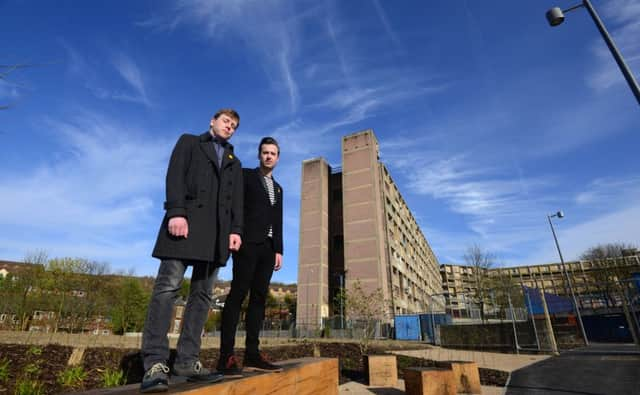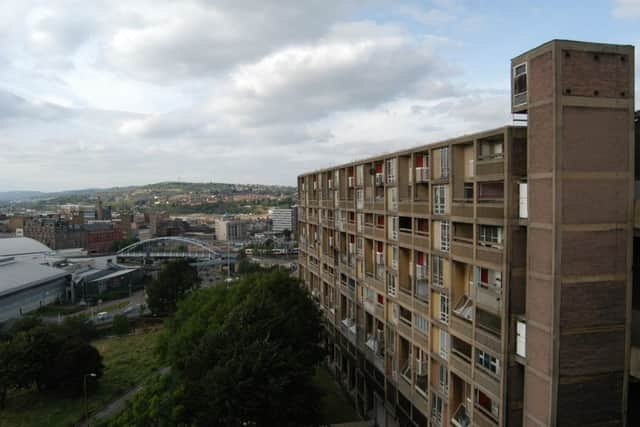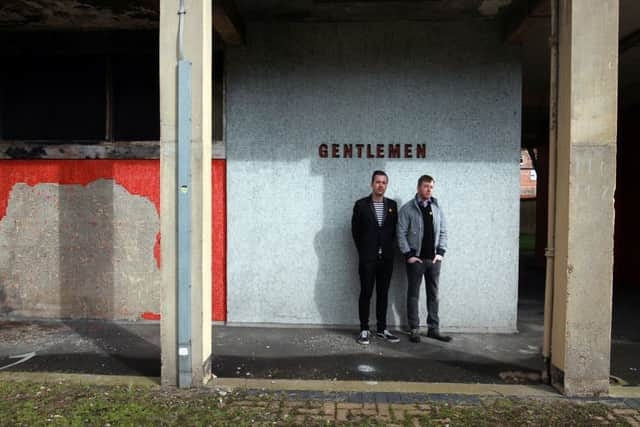Being brutally honest: Are Sheffield's concrete carbuncles coming back into fashion?


“Super” isn’t a word often used about the now-demolished Kelvin estate or the Brutalist style architecture it embodied. From the 1950s to the 1970s, this was a controversial style: monolithic, angular and uncompromising. With its lack of ornamental decoration and its stark industrial look, it was often loved by architects but loathed by many of the people who had to live in or with it. Charm, delight and warm humanity were never its strong cards.
It now has a proud Yorkshire champion, however: the newly-formed Sheffield Modernist Society, which, as one newspaper headline has put it, is “making the case for concrete”. Its focus is Modernist 20th century architecture, which rejected traditional design and found its most radical expression in Brutalism.
Advertisement
Hide AdAdvertisement
Hide AdThis Sheffield branch of the Manchester-based Modernist Society has attracted an impressive 110 members over its first three months. Even its founders, Andrew Jackson and Nicholas Gill, are surprised by the level of interest.


“I think attitudes to Modernism are softening,” says Gill, half-an-hour before a Sunday afternoon walking tour of Modernist Sheffield buildings – and the places where some of them used to be.
Gill, who works in digital television, has headed off the frequent jibe made by the style’s critics: how would its admirers like to live in a Modernist building themselves? He does live in one – at Park Hill Flats, another Sheffield citadel, built between 1957 and 1961 and the starting point of the tour.
Park Hill’s fabled “streets in the sky” loom over the city centre like a cliff-face of windows and balconies. With just short of 1,000 flats, it’s one of Europe’s most debated building projects and has been described as “like a concrete section of the Great Wall of China”.
Advertisement
Hide AdAdvertisement
Hide AdIt became as notorious as Kelvin for its problems – both structural and social.


To some it was an architectural icon, to others an architectural eyesore with a rare capacity for alienation. Whichever, it has become alternative “heritage” as Europe’s largest listed building, and is being stylishly refurbished by Urban Splash, the innovative regeneration company.
The refurbishment – which includes creating smart modern apartments – may revive the excitement which greeted Park Hill in the fifties when it replaced streets of back-to-back slums. It was part of a utopian Modernist vision of harnessing modern design and technology to transform society and create a better world. “Breathtaking Dream in Rehousing Comes True,” trumpeted the headlines. “Lucky People in Sky-High Homes”.
Urban Splash describes the first refurbished block as “achingly contemporary” and it’s right. The frontage is bright with yellow, orange and red panels, a contrast to the drabness of the unrefurbished blocks – now empty and ghostly.
Advertisement
Hide AdAdvertisement
Hide AdGill and I take the lift to his chic, compact apartment, whose picture windows offer panoramic views over the city centre. “I love the redevelopment,” he says. “I’ve always wanted to live in a Brutalist building.” Why? “Well, why would someone want to live in a Georgian or Victorian house? It’s just about taste.”


Andrew Jackson, Gill’s co-founder, also lives in a Modernist flat, though in a less grittily urban part of the city. He runs Mooed, a “cultural gifts shop”, studied at Liverpool School of Architecture and is chairman of the Yorkshire branch of the Twentieth Century Society, which campaigns for the century’s architecture.
Launching the walk, he mentions a comment made by the architectural critic Nikolaus Pevsner a few years after Park Hill opened: “There can alas be no doubt that such a vast scheme of closely-set high blocks of flats will be a slum in half a century or less.” As Jackson says: “Within 20 years his prediction effectively came true.”
Around 30 society members have signed up for the tour: lively, agreeably opinionated people with a clear fascination for concrete. I ask one of them, Sean Madner if he can honestly say he likes Brutalism. “Like it? I love it!” he says. “It’s the simplicity, the purity of it all.” He admits, however, to a slight reservation about the refurbishment. “It’s been over-done, over-cleaned,” he says. “I quite like the concrete stained.”
Advertisement
Hide AdAdvertisement
Hide AdWe walk down into the city centre to follow a route with plenty of interest, but, true to Modernism, short on picturesque charm. “This enormous hole is where Castle Market used to be,” says Jackson. We gaze at a demolition site and remember the early Sixties market hall-cum-shopping centre, which stood here until very recently.


Round the corner is the Magistrates Court, an anonymous-looking block from the late 1970s. Does fellow-walker Nicky Crewe really think it’s attractive? Yes, she says, for “the glass and the lines”.
“I grew up in the Sixties and Seventies thinking about saving Victorian buildings,” she says. “These sorts of buildings were ignored.” She adds that she works as a guide at Chatsworth – “so I’m used to a rather different sort of architecture”.
We walk uphill to granite-fronted Castle House, a former Co-op department store. Now empty, it features in Spatial Resonances, a series of five short films stemming from a collaboration between the society and the University of Sheffield. The Castle House film includes ballerinas dancing to the music of Bach on the store’s most famous feature, a self-supporting spiral staircase.
Advertisement
Hide AdAdvertisement
Hide AdAnother film features the abandoned and decaying Hallam Tower Hotel, in the city’s residential western suburbs. It’s a suitably bleak meditation on broken windows and weed-strewn wastelands.
The tour doesn’t include the hotel – or what’s arguably Sheffield’s most overwhelming Brutalist building: the enticingly named Moore Street Electricity Substation. Built in the late 1960s, this bunker-like structure is brilliantly summed up by Ruth Harman and John Minnis in their invaluable Pevsner Architectural Guide to Sheffield:
“A massive and totally uncompromising design well-suited to its position on the ring road. It has been loathed by several generations of Sheffielders but firmly expresses its purpose – the delivery of raw power – and is in all senses an extraordinarily powerful building.”


Back on the tour, we pass the former site of the underpass nicknamed “The Hole in the Road”. “It was like a sort of sunken doughnut with fish tanks,” says Andrew Jackson. More than most Modernist creations, it can evoke nostalgia.
Advertisement
Hide AdAdvertisement
Hide AdOur two-hour walk ends with a look at the late-Fifties University of Sheffield Library, which Pevsner reckoned “deserves the prize for the best individual 20th century building of Sheffield”. It wears well and looks a light and pleasant place to study.
Beyond it and down the hill is the former site of Kelvin flats, which, all those years ago, Ian Gow and his entourage visited. On a previous visit to Sheffield, he had unexpectedly knocked on the door of a house on the Manor estate.
“Albert, it’s the housing minister,” the woman answering the door shouted upstairs to her husband. “I don’t care who the bloody hell it is,” Albert shouted back. “Tell him I’m in’t bath.”
Sheffield Modernist Society: modernist-society.org or follow on Twitter @modernistsoc